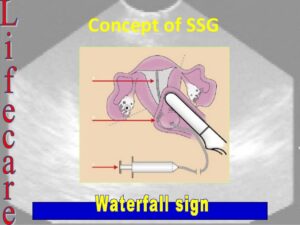
A Sonosalpingography is diagnostic procedure that helps detect:
- The patency of the fallopian tubes.
- Submucus fibrosis polyps
- Some uterine lesions
It is recommended as a part of infertility tests and when investigating the causes for repeat pregnancy losses. It is a day-care, outpatient procedure and takes 10 to 15 minutes to conduct.
Preparation for the procedure:
The procedure is usually conducted 8 to 10 days after your period.
Some women may find this test painful, so the doctor may recommend some pain medication to be taken about 1 hour before the test. The pain has been compared to period cramping, so for many, it’s not too painful
- It is best to empty your bladder before taking this test.
- Carry a sanitary napkin to use after the procedure as there may be some discharge as a result of the procedure.
The procedure:
- Usually anesthesia is not required for this procedure.
- You’ll be asked to lie down with your back on the table and your knees bent and your feet spread.
- Once you are ready, the doctor will gently insert a speculum into your vagina, so that the cervix can be seen.
- You may feel a little discomfort at this point.
- The cervix is then cleaned with an antiseptic solution.
- Then under ultrasound guidance, a thin tube is passed into the uterus.
- A small amount of saline is injected into the uterus to distend the endometrial cavity. This helps increase the size and shape of the uterine cavity and check for any abnormalities, such as polyps and fibroids in the lining of the womb
- The saline is further passed into the uterus and the fallopian tubes to check for blockages. If the fluid can be seen passing through the tubes on the ultrasound screen, it means that there are no blocks in the tubes.
- The procedure ends here, but you may be asked to lie down on the table for a few minutes if you feel any discomfort.
- The test is non-invasive. It does not expose the patient to radiation and iodinated contrast agents.
Post Procedure:
- After the procedure you will be asked to rest in a recovery room for a while.
- You can have a light meal if you wish and head home in about two hours.
- While you can resume your normal daily routine you may experience a little discomfort.
- You can resume normal activities and diet after the procedure.
